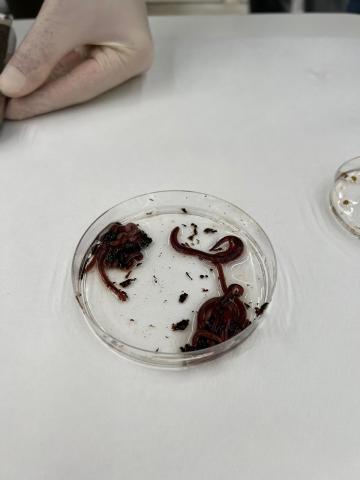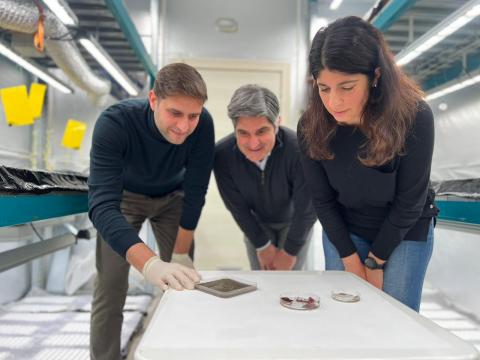How to solve the food problem on the Moon? The answer could come from a species of earthworms able of colonising the lunar soil and supporting future crop growth in space
Earthworms are able to survive and reproduce on a simulant of lunar regolith (the collection of sediments, dust and stones that make up the top layer of lunar soil). This is the result of a study coordinated by Scuola Superiore Sant'Anna on the possibility of future crop growth in space. The beneficial actions of earthworms could be exploited to make the lunar soil fertile and thus produce fresh food for astronauts.
The study, published in an international scientific journal, is a collaboration between the BioRobotics Institute, with prof. Cesare Stefanini and researcher Donato Romano, and the Plant Science Research Center with prof. Chiara Pucciariello. The Gran Sasso Science Institute (GSSI) is also involved.
Water and food on the moon? What solutions...
NASA has announced that the first woman and the next man will reach the Moon by 2024. One of the main problems of long-term space missions is the limited ability to stow resources such as food and water. Although technologies such as bioregenerative life support systems (BLSS) and space farming systems are promising for providing fresh food, producing oxygen, fixing carbon dioxide and purifying water for astronauts, the implementation of these systems is hindered by the need to provide significant initial amounts of resources from Earth.
Earthworms to promote future plantations on the Moon
The study co-ordinated by the Scuola Superiore Sant'Anna investigated the ability of a certain species of earthworm (Eisenia fetida, known as the 'Californian red worm' and commonly used for the production of vermicompost) to survive and reproduce on a lunar regolith simulant. These animals harbour a particular microbiota in their digestive system that, when released into the soil, has a plant growth-promoting and stress-tolerant effect.
"The results of the research," says Donato Romano, first author of the study, "show how the earthworm can adapt to lunar soil, providing a potential biological tool to promote the processes of creating habitable extraterrestrial soils with a possible consequent increase in the fertility of the lunar regolith, which is more suitable for hosting plants and therefore humans.
The action of earthworms could thus help reduce the costs and logistical challenges of transporting growing material from Earth to the moon, thus directly exploiting lunar soil.
"Previous studies have shown that plants are able to grow and germinate on lunar regolith in the presence of nutrients. However, this substrate is not completely beneficial for the plant because it can induce stress situations. What we want to study in the near future is whether the presence of earthworms within the lunar regolith can reduce this stress situation and make this substrate more beneficial for plant growth,' says Chiara Pucciariello, associate professor at the Plant Science Research Centre.
"A small group of engineers, entomologists and plant scientists tackled a major scientific challenge: how to make lunar soil fertile. We have succeeded in demonstrating, first in the world, that a species of earthworm is capable of surviving on this surface. This is a first step towards possible cultivation on the Moon,' comments Cesare Stefanini, full professor at the BioRobotics Institute.
Study details
https://www.sciencedirect.com/science/article/pii/S240584402301890X
Donato Romano (Istituto di BioRobotica, Scuola Superiore Sant’Anna), Adriano Di Giovanni (Gran Sasso Science Institute), Chiara Pucciariello (il Centro di Ricerca Scienze delle Piante, Scuola Superiore Sant’Anna), Cesare Stefanini (Istituto di BioRobotica, Scuola Superiore Sant’Anna).







